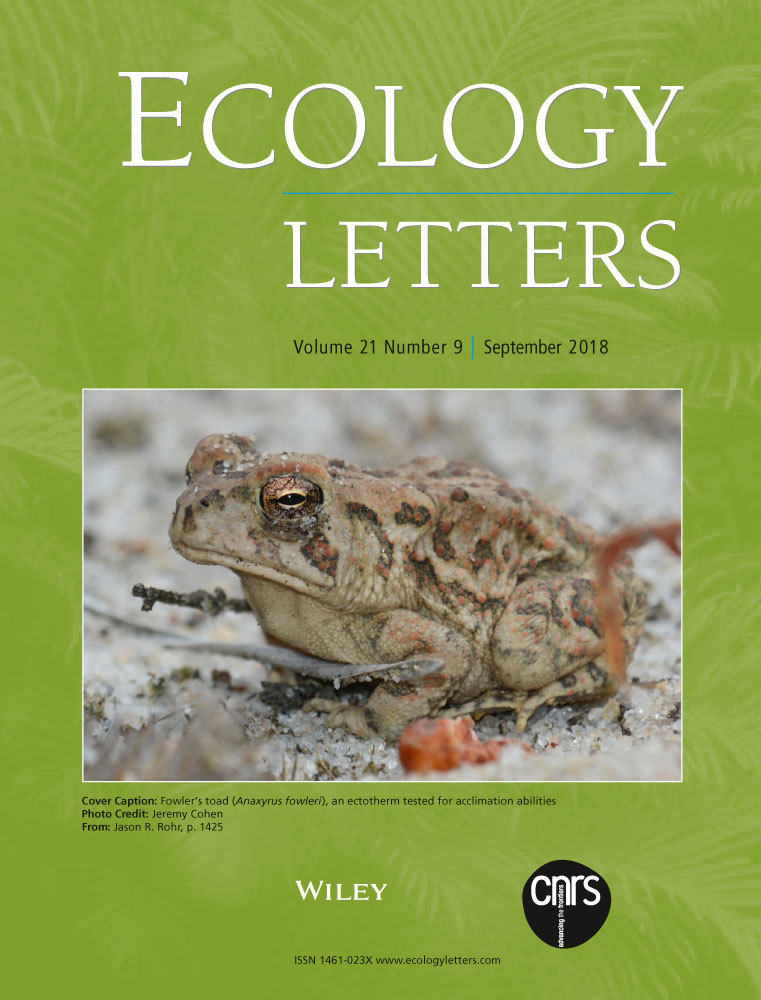Ver ítem
- xmlui.general.dspace_homeCentros Regionales y EEAsCentro Regional Patagonia SurEEA Santa CruzArtículos científicosxmlui.ArtifactBrowser.ItemViewer.trail
- Inicio
- Centros Regionales y EEAs
- Centro Regional Patagonia Sur
- EEA Santa Cruz
- Artículos científicos
- Ver ítem
Spatial heterogeneity in species composition constrains plant community responses to herbivory and fertilisation
Resumen
Environmental change can result in substantial shifts in community composition. The associated immigration and extinction events are likely constrained by the spatial distribution of species. Still, studies on environmental change typically quantify biotic responses at single spatial (time series within a single plot) or temporal (spatial beta diversity at single time points) scales, ignoring their potential interdependence. Here, we use data from a
[ver mas...]
Environmental change can result in substantial shifts in community composition. The associated immigration and extinction events are likely constrained by the spatial distribution of species. Still, studies on environmental change typically quantify biotic responses at single spatial (time series within a single plot) or temporal (spatial beta diversity at single time points) scales, ignoring their potential interdependence. Here, we use data from a global network of grassland experiments to determine how turnover responses to two major forms of environmental change – fertilisation and herbivore loss – are affected by species pool size and spatial compositional heterogeneity. Fertilisation led to higher rates of local extinction, whereas turnover in herbivore exclusion plots was driven by species replacement. Overall, sites with more spatially heterogeneous composition showed significantly higher rates of annual turnover, independent of species pool size and treatment. Taking into account spatial biodiversity aspects will therefore improve our understanding of consequences of global and anthropogenic change on community dynamics.
[Cerrar]

Autor
Hodapp, Dorothee;
Borer, Elizabeth T.;
Harpole, William Stanley;
Lind, Eric M.;
Seabloom, Eric William;
Adler, Peter B.;
Alberti, Juan;
Arnillas, Carlos Alberto;
Bakker, Jonathan D.;
Biederman, Lori;
Cadotte, Marc;
Cleland, Elsa E.;
Collins, Scott;
Fay, Philip A.;
Firn, Jennifer L.;
Hagenah, Nicole;
Hautier, Yann;
Iribarne, Oscar;
Knops, Johannes M.H.;
McCulley, Rebecca L.;
MacDougall, Andrew S.;
Moore, Joslin L.;
Morgan, John W.;
Mortensen, Brent;
La Pierre, Kimberly J.;
Risch, Anita C.;
Schütz, Martin;
Peri, Pablo Luis;
Stevens, Carly J.;
Wright, Justin P.;
Hillebrand, Helmut;
Fuente
Ecology Letters 21 (9) : 1364-1371 (September 2018)
Fecha
2018-09
Editorial
Wiley
ISSN
1461-023X
1461-0248
1461-0248
Formato
pdf
Tipo de documento
artículo
Palabras Claves
Derechos de acceso
Restringido
 Excepto donde se diga explicitamente, este item se publica bajo la siguiente descripción: Creative Commons Attribution-NonCommercial-ShareAlike 2.5 Unported (CC BY-NC-SA 2.5)
Excepto donde se diga explicitamente, este item se publica bajo la siguiente descripción: Creative Commons Attribution-NonCommercial-ShareAlike 2.5 Unported (CC BY-NC-SA 2.5)

